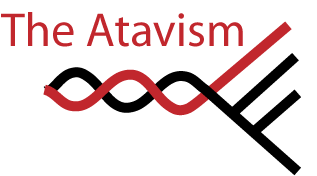Thursday, May 24, 2007
Starting again
Welcome to the Atavism. This is my new blog, I used to blog at Science and Sensibility but between a lack of internet at my new flat and real life’s ability to get in the way I let that one wither and die.
Despite my past inattention I did enjoy blogging; it’s a really neat way of developing communication style that is clear and concise without giving in to simplifying things. .So, it’s about time I got back to it. I’m taking the break as excuse to ditch by old blog partly because I realised I had sub-consciously stolen the tile from a chapter of one of Richard Dawkins’ books, partly because I retardedly put an underscore in the URL when I set the account up 1 and partly because it’s fun for a scientist to have a creative project like putting a logo/webdesign together. (If there is something wrong with this template please yell out, I have only checked it out on a few systems)
Atavism is the technical term for what is popularly called a “throw back” – that rare individual that displays a trait not seen in its kind for many generations. I called this blog The Atavism because I, much like a limbed whale, am a bit of a throw back myself. Most of my scientific training has been in molecular biology (the field of biology that focuses on how DNA and proteins interact to make cells work) but I found as I went along I became less interested in studying the amazing systems that work inside our cells for their own sake and more interested how the revolutionary techniques developed for this ‘new science’ could be applied to some of the oldest questions in biology.
My particular interests are in speciation (determining how new species arise), biogeography (how those species got to be where they are) and what I guess could be called ‘micro-evo-devo’ (which amounts to determining the mechanisms by which new morphological or behavioural traits arise after speciation) but hopefully I'll have plenty to say on topics outside of these ones too.
1 Rendering the site invisible to people that use a proxy server that’s set up to the letter of the TCP/IP specifications to get to the web


